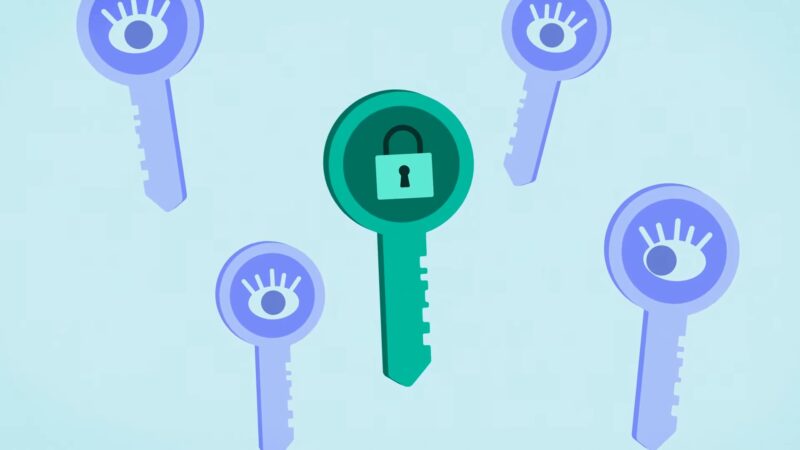Hashing, a process that transforms input data into a fixed-size string of characters, is integral to the integrity and security of blockchain networks. By ensuring data immutability and contributing to the consensus mechanism, hashing provides a robust defense against tampering and fraud.
Hash functions are algorithms that take an input (or ‘message’) and return a fixed-size string of bytes.
The output, typically a ‘digest’, is unique to each unique input. Even a minor change in the input will produce a significantly different output. This sensitivity to change is known as the avalanche effect, which is crucial for maintaining the integrity of blockchains.
Why is Blockchain Important?

Within blockchain, these functions fulfill several critical roles. They ensure data integrity, contribute to the structure of blockchain, and are integral to the process of mining. Each block in the chain contains a hash of the previous block, creating an unbreakable link. Without secure hash functions, blockchains could not operate with the trustless assurance they are known for.
Hash is Crucial for Data Integrity
The primary purpose of a hash within a blockchain is to maintain data consistency. Every transaction block contains a unique hash. If even a single character in a transaction is altered, the hash will change, signaling a discrepancy in the data. This feature makes unauthorized alterations easily detectable.
The Irreversibility of Hash Functions
Another key attribute of hash functions is their irreversibility. It is computationally infeasible to reverse-engineer the original input from its output digest. This one-way street ensures that even if a hash is exposed, the original data remains secure.
Hashes as a Tool for Verification
Hashes are also used to verify the authenticity of information. When a transaction is broadcasted to the network, nodes perform hash calculations to validate the data. If the hash matches the one stored in the block, the transaction is considered valid. This verification process is critical in preventing fraud and maintaining the blockchain’s integrity.
Its Role In the Structure of Blockchain

Each block in a blockchain contains the hash of the previous block, creating a chain of blocks. This sequential hashing ensures that once a block is added to the blockchain, it cannot be changed without altering all subsequent blocks, which is computationally impractical on a distributed network.
The Immutable Ledger
The immutability of a blockchain is a direct consequence of its use of hashes. This immutability ensures that once data has been added to the blockchain, it cannot be tampered with, creating a trustworthy and unalterable ledger of transactions.
Complexity is Providing Improved Security
The complexity of calculating hashes also adds a layer of security. The process of finding a hash that satisfies certain network-imposed conditions (known as proof-of-work in many blockchains) requires significant computational effort, further securing the network against malicious alterations.
What About the Mining Process?

In blockchain networks that use proof-of-work, miners compete to find a hash that meets a network-defined condition. This process, often likened to solving a complex puzzle, is essential for adding new blocks to the blockchain. The first miner to solve the puzzle gets to add the block and is rewarded.
Hashes and Mining Rewards
Hashes are directly tied to the mining reward mechanism. The correct hash acts as proof that a miner has expended significant computational work, justifying their claim to the block reward and the right to add the next block to the chain.
Securing of the Network
The effort required to produce the proof-of-work hash secures the network by making it prohibitively expensive to attack. To alter any aspect of the blockchain, an attacker would need to redo the work of the block they wish to change and all subsequent blocks, which requires an immense amount of computational power.
The security of a blockchain comes from the fact that each block contains the hash of its predecessor, creating a chain of dependency. Altering a single block would change its hash, and this discrepancy would propagate through subsequent blocks, signaling a breach in the chain’s integrity.
-
Proof of Work
Blockchain networks often employ a consensus mechanism known as Proof of Work (PoW) to add new blocks to the chain. PoW involves solving a complex mathematical puzzle that requires computational effort. The puzzle is based on hash functions, and the solution, often referred to as a nonce, is what allows a new block to be added to the blockchain.
This process is intentionally resource-intensive to deter malicious actors. The difficulty of the puzzle ensures that altering any part of the blockchain would require an impractical amount of computational power to recompute the hashes for all subsequent blocks, thus securing the chain through the sheer cost of potential attacks.
-
User Security

Hash functions play a pivotal role in protecting user identities on the blockchain. User addresses on the blockchain are derived from public keys through hashing. Since hash functions are one-way, the original public key—and by extension, the user’s identity—remains concealed, providing a layer of anonymity while allowing for transparent transactions.
-
Transactions
Each transaction on the blockchain is hashed, creating a unique identifier that can be publicly verified without revealing the transaction’s details. This process ensures that once a transaction is recorded on the blockchain, it cannot be altered without detection, as the corresponding transaction hash would also change, signaling an anomaly.
-
Smart Contracts
Smart contracts are self-executing contracts with the terms of the agreement directly written into code. Hash functions contribute to the security of these contracts by ensuring that the terms cannot be changed once deployed. They verify the contract’s integrity by comparing the deployment hash with the hash of the contract’s terms, ensuring that the contract executes exactly as intended.
Limitations of Hashing in Preventing Other Security Issues
There are several areas where hashing alone cannot protect against vulnerabilities, and additional security measures are necessary.
Smart Contract Flaws
Smart contracts are automated agreements that execute when certain conditions are met. However, the security of a smart contract is only as good as the code it’s written in. Hashing can verify that the contract hasn’t been tampered with, but it cannot ensure the contract is free from bugs or logical errors. Flawed smart contracts can be exploited, leading to significant financial losses.
End-Point Security Risks
The security of end-user devices that interact with the blockchain is another area where hashing offers no solution. If a user’s private key is compromised due to poor security practices, such as weak passwords or malware, attackers can authorize transactions on behalf of the user. Hashing cannot prevent unauthorized access if the underlying security of the user’s device is compromised.
Network-Level Attacks
Blockchain networks can be susceptible to certain types of network-level attacks, such as Distributed Denial of Service (DDoS) attacks. These attacks overwhelm the network with traffic, potentially disrupting service and access to the blockchain. Hash functions do not address the availability of the network and thus cannot mitigate such attacks.
Consensus Hijacking

In a blockchain, if a single entity gains control over a majority of the network’s hashing power, known as a 51% attack, they can influence the consensus mechanism. This could allow them to double-spend coins or prevent new transactions from gaining confirmations. While the hash function secures individual blocks, it does not protect against such systemic attacks on the network’s governance.
Privacy Limitations
Hashing secures transaction data, but it does not provide complete privacy. Blockchain’s transparency means that transaction flows can be analyzed, potentially revealing patterns that could be traced back to individuals or organizations. Additional privacy measures, such as mixing services or privacy-focused cryptocurrencies, are necessary to enhance user anonymity.
What is the Safest Way to Keep Your Crypto?
Even though hashing is an advanced model of protection, there were many cases of serious cyber-attacks where millions were stollen. In that matter, you should always use additional measures to make sure that your crypto will stay safe. Here are some of the biggest cryptocurrency hacks.
| Year | Platform Hacked | Cryptocurrency Stolen | Amount Stolen (USD) |
|---|---|---|---|
| 2014 | Mt. Gox | Bitcoin (BTC) | $450 million |
| 2016 | Bitfinex | Bitcoin (BTC) | $72 million |
| 2018 | Coincheck | NEM (XEM) | $534 million |
| 2019 | Upbit | Ethereum (ETH) | $49 million |
| 2020 | KuCoin | Multiple currencies | $281 million |
| 2021 | Poly Network | Multiple currencies | $610 million |
Best Practices for Security
- Use Strong, Unique Passwords: For every platform where you hold crypto, use a password that is long, complex, and unique. Consider using a password manager to keep track of your passwords securely.
- Enable Two-Factor Authentication (2FA): Always enable 2FA on your accounts. This adds an extra layer of security, as accessing your account requires something you know (your password) and something you have (a one-time code, usually on your phone).
- Beware of Phishing: Be vigilant about phishing attempts. Never click on suspicious links or provide your private keys or sensitive information in response to an email.
Secure Storage Options
- Hardware Wallets: A hardware wallet is a physical device that stores the user’s private keys in a secure hardware device. They are considered one of the safest ways to store cryptocurrencies because they provide offline storage, reducing the risk of online hacking.
| Pros | Cons |
|---|---|
| Offline Storage: Your private keys never leave the device, keeping them offline and safe from online hacking attempts. | Cost: Hardware wallets can be expensive compared to free software wallets. |
| Portability: They are typically small, like USB devices, and can be carried around easily. | Physical Damage Risk: Being a physical object, it can be damaged or lost, potentially losing access to assets if proper backups are not maintained. |
| User-Friendly: Many have easy-to-use interfaces that are suitable for all levels of users. | Limited Capacity: Some hardware wallets have limitations on the number of different cryptocurrencies they can store at once. |
- Cold Storage: This method is used for the long-term storage of large amounts of cryptocurrencies.
| Pros | Cons |
|---|---|
| No Internet Exposure: Cold storage refers to keeping a reserve of cryptocurrency offline, which eliminates the risk of online hacking. | Inconvenience: Accessing funds in cold storage is more cumbersome than hot wallets, which can be a hassle for frequent transactions. |
| Full Control: You have complete control over your security measures and are not reliant on third-party services. | Setup Complexity: It can be complex to set up securely, especially for those who are not technically adept. |
| Long-Term Security: Ideal for long-term investors looking to store their cryptocurrency for a long time without frequent transactions. | Recovery Risks: If the recovery details are lost or forgotten, the assets may be irretrievable. |
- Multi-Signature: This model require multiple private keys to authorize a single transaction. This significantly enhances security, as it distributes the risk and makes it harder for unauthorized users to move funds.
| Pros | Cons |
|---|---|
| Shared Ownership: Useful for partners or teams managing funds, as transactions require multiple signatures. | Complexity: Can be complex to set up and manage, especially for those unfamiliar with the technology. |
| Security: Provides an additional layer of security, as a hacker would need to compromise multiple devices or parties. | Coordination Required: Requires coordination among key holders, which can delay transactions. |
| Customization: Allows for setting up custom security policies, like requiring 3 out of 5 signatures to confirm a transaction. | Limited Support: Not all cryptocurrencies or wallets support multi-signature technology. |
FAQs
What is the Most Important Hash Function?
The most important hash function is arguably SHA-256, primarily due to its security features and widespread use in systems like Bitcoin.
What are the 3 Commonly Used Hash Functions?
- SHA-256: Secure Hash Algorithm 256-bit, widely used in cryptocurrency.
- MD5: Message Digest Algorithm, fast but less secure, common in file verification.
- SHA-1: Secure Hash Algorithm 1, previously common in SSL certificates.
Where is Hash Stored in Blockchain?
In a blockchain, the hash is stored in each block header. It represents the block’s data and is used to link to the previous block, creating the chain.
How Long is a Blockchain Hash in Characters?
A blockchain hash, such as the SHA-256 hash, is typically 64 characters long, representing 256 bits in hexadecimal.
How Do I Check My Blockchain Hash?
To check your blockchain hash:
- Access the transaction or block using a blockchain explorer.
- Locate the transaction details.
- Find the hash value, which is usually prominently displayed.
The Bottom Line
The Hash function is the core of Blockchain’s security. This is one of the most important features that is allowing cryptocurrencies to have their unique characteristics like transparency, security, fast processing, and more.
In the end, even though this is a safe system, keep in mind that protecting your account should still be in the main focus. The problem when keeping your crypto on some online exchange is that it can be vulnerable. In that matter, cold wallets are always the best solution.
